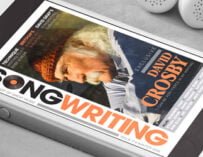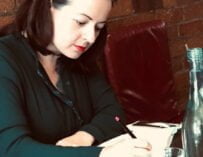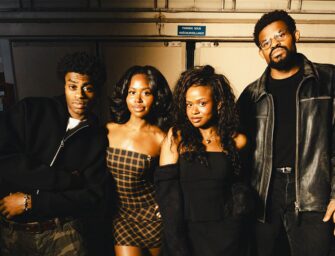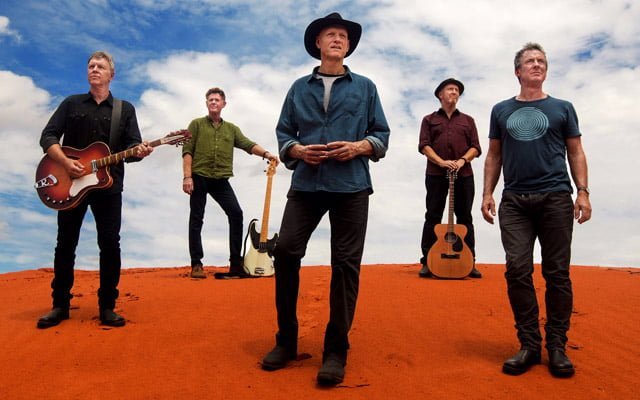
Patrick: “I see orchestrating as writing new melodies within a song but always in function of the main melody.”
The producer, composer and arranger takes a break from the studio to offer some tips on writing and orchestrating strings
Decca Publishing’s Patrick Hamilton is a flag bearer for the next generation of producer, composer and arranger. A leading figure in classical crossover music, his ambitions, which are shared with his publisher, include the verticals of artist production alongside film and TV score composition, which together bring his unique skill set to the adult contemporary classical space.
Hamilton has become the go-to producer for a range of international artists – Katherine Jenkins, Alfie Boe, Fernando Varela, Mark Masri, Richard Clayderman, Trystan Llyr Griffiths, David Garrett, Bryn Terfel, to name a few. It was his ongoing collaborations with Decca Records that led to Patrick joining the newly created Decca Publishing unit, launched in 2017.
With all this experience under his belt, we invited Patrick to tell us all about songwriting and arranging.
GUIDING LIGHT
I’ve been asked a lot of times how I write a new song, does the inspiration come when I’m sleeping or taking a walk in the park. That sounds very romantic and yes that has all happened but most of the time I’m sitting behind the piano when the spark for a new song manifests. I close my eyes and I’m thinking in colours, atmospheres and hope the magic comes. Sometimes I just come up with a few measures or a riff that I record on my phone and then work it out later.
That happened also for Xander’s Song, a new song which is on Katherine Jenkins latest album, Guiding Light. I had some spare time at Air Studios in London and sat behind the beautiful Bôsendorfer grand piano of the great sounding live room of Studio 1. A few days before, Katherine asked me to write a song for her little son, the two-month-old Xander. The idea for that song came almost immediately. I was inspired by the hall and the sound of the Bösendorfer I think.
If I’m writing pop songs, I’d rather start with a beat, then chords and melody depending if it’s uptempo or not, or if it’s a production-based song. I always prefer to sit at the piano but then a lot of times I end up with a ballad…. (the romantic soul in me I guess..)
Most of the time, I’m arranging and orchestrating my own songs. I see orchestrating as writing new melodies within a song but always in function of the main melody. My rule has always been: don’t over do it because less is more.
START UP
There are different ways to write for strings. First of all, you have to decide if you want to have a big sound or if you want to keep it rather intimate and small. I usually start jamming on the keyboard to see what works for a particular song or idea that I have. I have a lot of great string sounds in my computer, so I can easily make a choice between a big string section or a small one when I’m playing around with them. Once I make the choice of the section I want to use, I start playing until I’m satisfied with what I hear and then I’ll record it in Logic.
My next step is working out the orchestration on paper, very old school but for me the right way. After I’ve written all the parts, I’m recording everything separate (1st violins, 2nds, violas, cello and Cbass) so I get a perfect idea of how my arrangement sounds. Once the MIDI mockup is done, I’m exporting the MIDI file so I can import it very easily into Sibelius to have proper parts and scores for the string players.
DOUBLE OR NOTHING
I was lucky enough to have worked with full-sized string orchestras of 60 or more but that’s not always the case depending on the budget. The ensemble I use the most is 12/10/8/6/6, meaning 12 first violins, 10 second violins, eight violas, six cellos and six Cbass. This line up gives a very nice and warm sound. When there’s a small budget, I’ve done some recordings with only five, seven or nine players and doubled them (which is not always allowed in certain countries because of the union). When I’m doubling,
I make sure that the players change seats otherwise you can have some phasing and that’s not what you want to hear. You can also ask them to change instruments, but they usually don’t like that.
If you’re not doubling, you can always add some samples and use the real strings to have that emotion of the real players if you don’t get the big sound you want but anyway it’s always better to have a real full section (and a big budget).






![Interview: Jessie Jo Dillon [2025]](https://www.songwritingmagazine.co.uk/wp-content/uploads/jessie-jo-dillon-2-by-libby-danforth-335x256.jpg)


























Related Articles